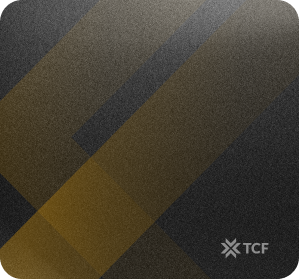Choosing the right crowdfunding platform is one of the most high-impact decisions you’ll make before launch. It shapes who discovers your campaign, how backers interact with it, and even how smoothly things run after the funding rush ends.
For most creators, the shortlist comes down to Kickstarter, Gamefound, or BackerKit, each with a different audience, toolset, and way of doing things. On paper, the choice looks simple. In practice, it’s tangled up with fees, reach, feature quirks, and how well the platform fits your specific niche.
This guide breaks down those differences in plain language, with fresh data, real creator experiences, and hard-earned lessons. You’ll get side-by-side comparisons, feature deep-dives, and clear “best-for” scenarios so you can pick a platform with confidence and without spending a week lost in conflicting advice.
[[cta2]]
Quick Comparison: Kickstarter vs Gamefound vs BackerKit
Before diving into the details, here’s a side-by-side snapshot of how the three platforms stack up on their core purpose, fees, and standout strengths along with the trade-offs you’ll want to keep in mind.
Platform Deep Dives: Kickstarter, Gamefound, and BackerKit
Each platform has its own strengths, trade-offs, and ideal use cases. In the sections below, we’ll break down what makes Kickstarter, Gamefound, and BackerKit unique so you can see where your campaign might fit best.
1. Kickstarter
If you say “crowdfunding” in most creative circles, Kickstarter is the first name that comes to mind. Since launching in 2009, it’s built the largest and most diverse backer community in the industry, spanning tabletop games, tech, design, art, publishing, and more. For many creators comparing the best crowdfunding websites, Kickstarter often becomes the default starting point, but size comes with its own set of challenges.
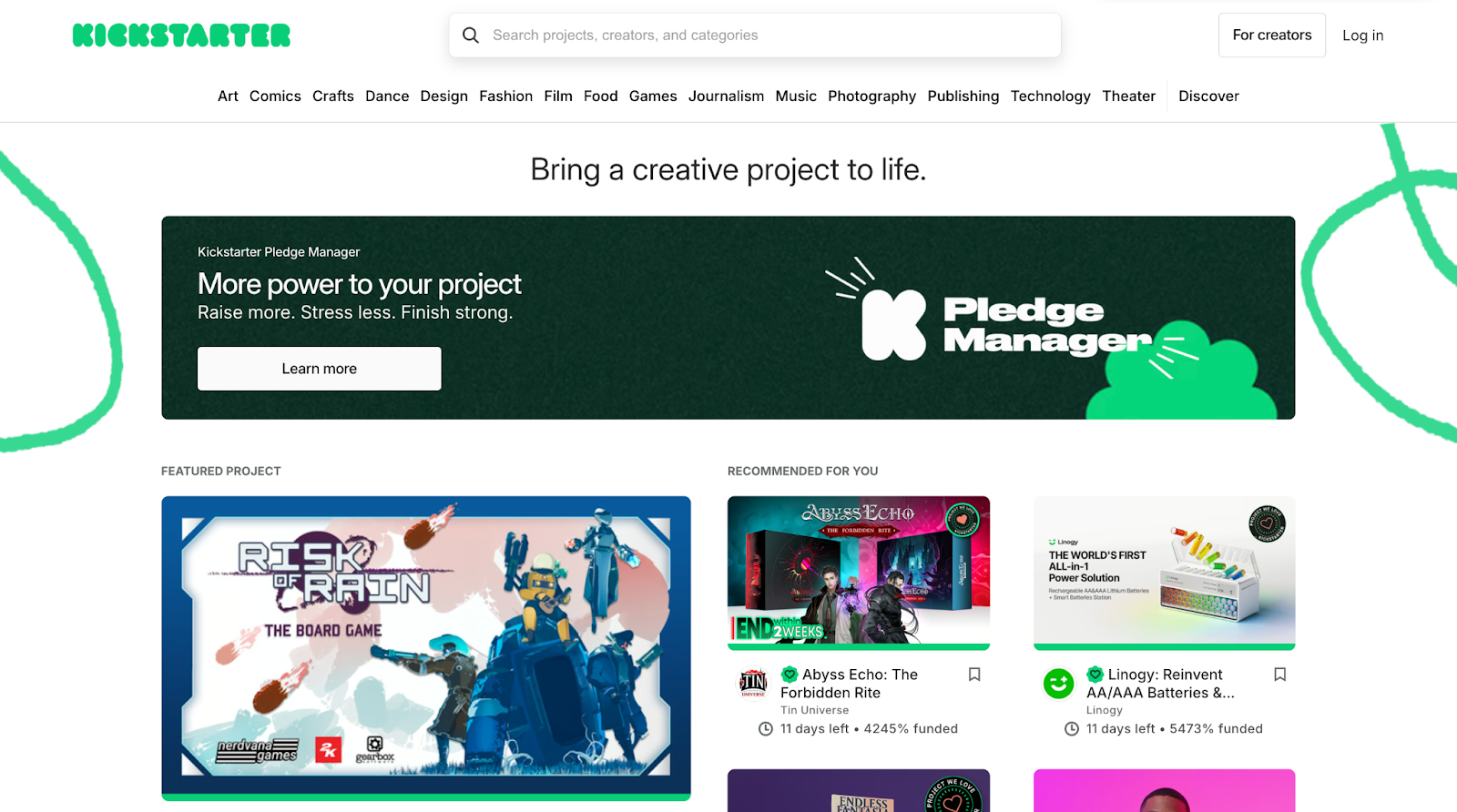
Core Strengths
- Massive built-in audience: Kickstarter’s reach is unmatched, pulling millions of visitors every month and giving campaigns organic exposure through its homepage, category feeds, and recommendation engine.
- High backer trust: Years of successful projects have made Kickstarter the most recognized crowdfunding brand, which can boost conversion rates, especially for first-time backers who may be hesitant to pledge elsewhere. This reputation often gives it an edge in the Kickstarter vs Indiegogo decision too, since many backers see Kickstarter as the safer and more familiar choice.
- Category diversity: Ideal for creators who want visibility beyond a single niche, or whose products overlap multiple interest groups.
- Streamlined creation tools: Kickstarter’s campaign builder is intuitive, with enough flexibility for rich visuals, embedded videos, and reward customization without overwhelming new creators. It also integrates core marketing and tracking tools, including Facebook Pixel and Google Analytics, right from the dashboard.
- Robust backer interaction: Built-in updates, a public comment section, and private backer messaging make it easy to keep supporters engaged throughout the campaign. The comment section is a blessing and a curse though: great for building hype, but it can get messy if you’re slow on updates.
Potential Trade-Offs
- Heavy competition: Any fair Kickstarter review will note that a large audience also means a crowded marketplace. In popular categories like tabletop or tech, you’re often competing with dozens of simultaneous launches. Kickstarter is like a giant convention hall: great foot traffic, but you’re shouting over everyone else.
- Algorithm bias: Kickstarter’s discovery tools tend to favor projects already gaining traction, which can make the early funding push critical. Several creators warn that without a strong pre-launch list, you can easily get buried.
- Post-campaign limitations: Kickstarter doesn’t offer an integrated pledge manager, meaning you’ll need to use third-party tools like BackerKit or Gamefound for late pledges and add-ons. This is a common frustration, especially for those running complex reward structures.
- Analytics depth: While Kickstarter provides traffic and pledge source breakdowns, it’s relatively limited compared to Gamefound’s built-in analytics. You’ll likely need external tools for detailed ad attribution or advanced tracking.
Fee structure
Kickstarter takes a 5% platform fee, plus around 3–5% in payment processing fees. There’s no option for flexible funding or installment pledges: it’s all-or-nothing, which can be risky for campaigns that could still deliver on a smaller budget. Refund policies are project-dependent, not platform-driven.
Ideal Use Cases
Kickstarter makes the most sense if you:
- Want the broadest possible reach across categories
- Have a campaign with strong visual and storytelling appeal that can stand out in a crowded feed
- Are prepared to bring your own pre-launch audience but also want to tap into organic discovery
- Prefer an established, trusted platform with minimal learning curve for campaign setup
2. Gamefound
Originally launched as a pledge manager, Gamefound has evolved into a full-fledged crowdfunding platform with a laser focus on tabletop and board game creators. Its tools are designed to handle the complex reward structures, shipping needs, and community expectations of this niche, and it’s become the go-to alternative for creators who feel Kickstarter doesn’t fully cater to them.
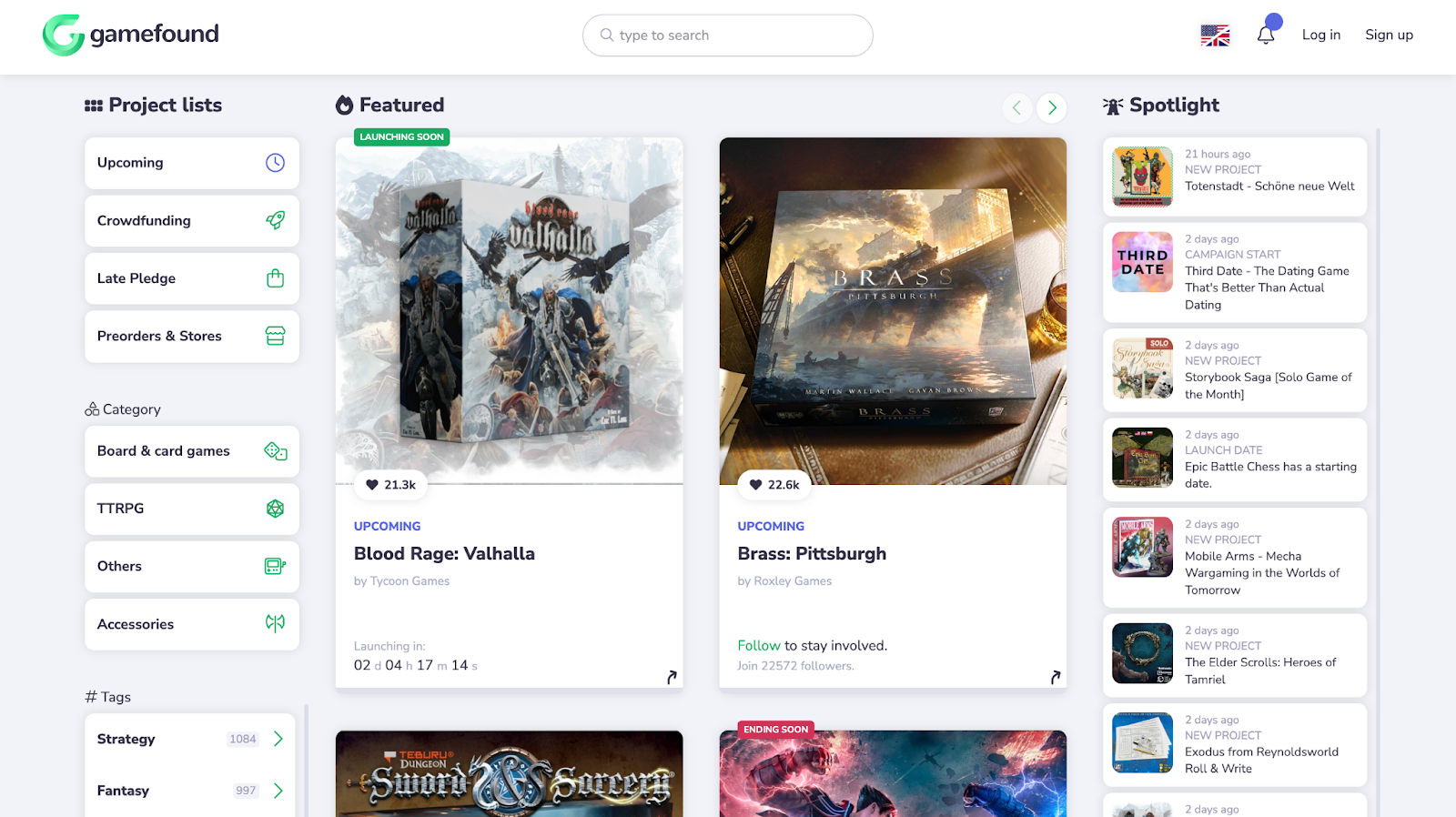
Core Strengths
- Highly targeted audience: Gamefound includes a built-in pledge manager for late pledges, add-ons, VAT handling, and shipping management. This removes the need to migrate to a third-party tool after funding, which many creators see as a major time and cost saver compared to running a separate setup.
- Integrated pledge manager: Gamefound includes a built-in pledge manager for late pledges, add-ons, VAT handling, and shipping management. This eliminates the need to migrate to a separate tool post-campaign and keeps all backer data in one ecosystem.
- Advanced customization tools: The campaign builder supports rich product pages, detailed add-on structures, and custom visuals without needing heavy outside design work. It’s built with complex reward systems in mind, so you can set up tiered shipping, bundles, and optional purchases without workarounds.
- Strong backer engagement features: Creators can run updates, comments, and polls directly on the platform, plus manage multiple campaigns and pre-launch pages from a single account. Backers can also follow creators to get notified of new projects, boosting long-term retention.
Potential Trade-Offs
- Smaller total reach: Gamefound’s traffic is niche-heavy. If you’re outside tabletop or adjacent categories, you may find organic reach more limited than on Kickstarter. You’ll rely more on bringing in your own audience.
- Learning curve: The platform’s advanced customization can feel overwhelming for new creators. If you’ve never used a pledge manager before, setting up shipping zones, VAT, and add-on logic can be a challenge.
- Analytics and ad support: Gamefound offers more granular tracking tools than Kickstarter, but its ad ecosystem is less developed. You’ll need to run most paid marketing externally, though it supports standard pixel integrations for attribution.
- Stricter moderation: Some creators have expressed frustration over slower approvals or content restrictions compared to Kickstarter, especially for projects with unconventional themes.
Fees and funding model
Gamefound charges a 5% platform fee and around 3–5% in payment processing fees. Campaigns are all-or-nothing funding by default. Flexible funding options are limited and mostly tied to pre-order systems after a campaign ends.
Ideal Use Cases
Gamefound is a strong fit if you:
- Are creating a tabletop, board game, or related hobby product
- Want an integrated pledge manager to streamline post-campaign sales
- Have a product that benefits from complex reward and add-on structures
- Prefer a smaller, more niche-focused audience over a generalist platform
3. BackerKit
BackerKit started as a pledge manager for Kickstarter projects and has grown into a platform that now offers its own crowdfunding launch option. Unlike Kickstarter or Gamefound, its main strength lies in post-campaign operations: managing add-ons, shipping, and communication long after the funding clock runs out.
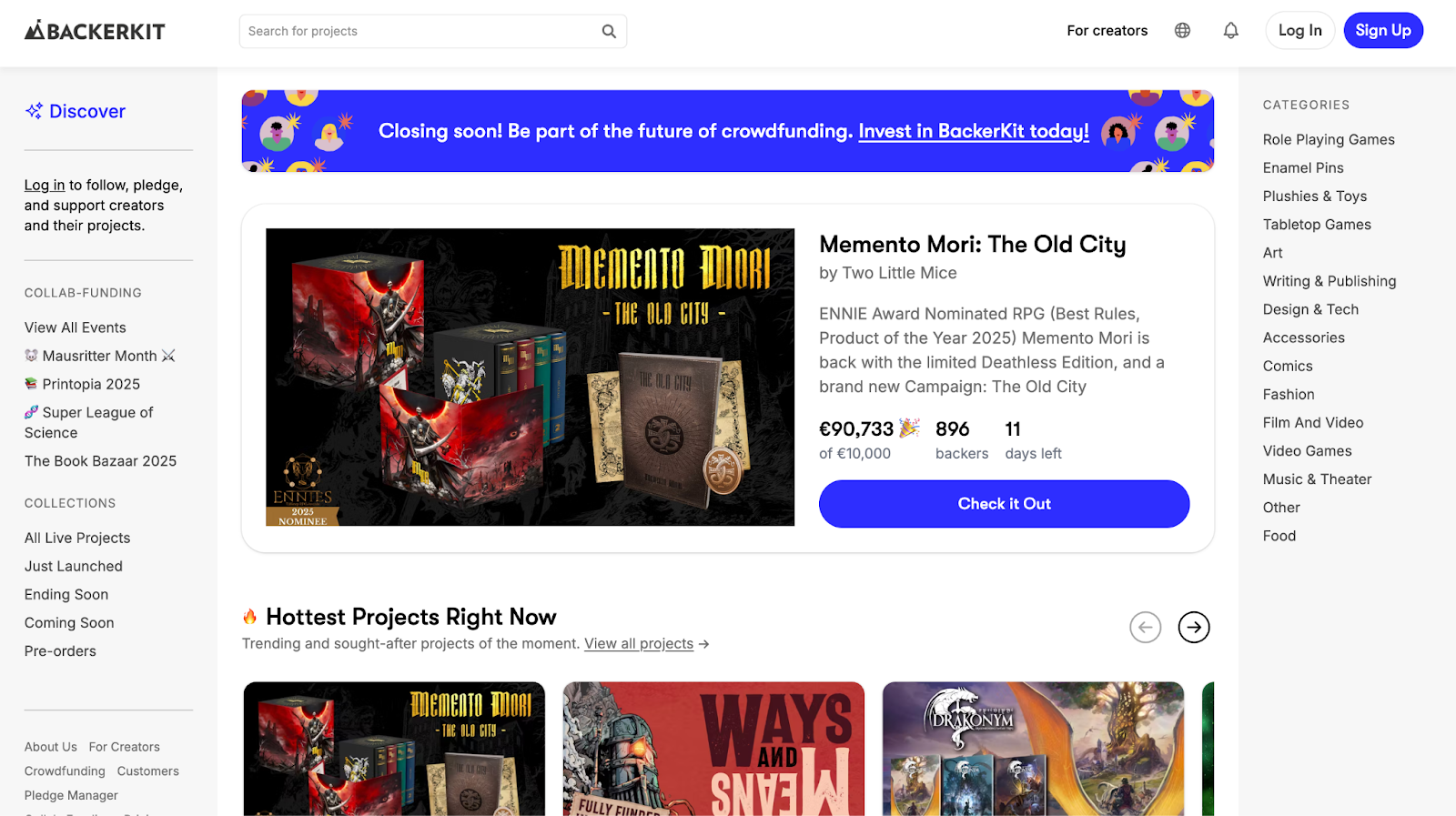
Core Strengths
- Seamless pre- to post-campaign workflow: BackerKit unites pre-launch pages, live campaigns, and pledge management in a single platform. That means no migration headaches when it’s time to handle late pledges, add-ons, or shipping details.
- Pledge manager pedigree: This is still BackerKit’s strongest card. Its pledge manager is one of the most robust in the industry, with advanced segmentation, VAT handling, regional shipping rules, and upsell tools built in.
- Cross-platform flexibility: Even if you launch on Kickstarter, you can still use BackerKit’s pledge manager, so you aren’t locked into its crowdfunding platform to benefit from its tools.
- Marketing and audience tools: BackerKit has been building a “backer network” from years of managing campaigns, which it now taps for its own platform launches. Its BackerKit Launch feature helps you target previous backers of similar projects, and it integrates easily with ad pixels for tracking.
- Niche-friendly features: Customizable checkout flows, reward limitations, and region-specific shipping options make it ideal for campaigns with complex logistics or physical products.
Potential Trade-Offs
- Minimal organic discovery: BackerKit’s crowdfunding platform doesn’t have the same built-in audience as Kickstarter or Gamefound. If you don’t already have an audience, you’re basically launching into an empty room.
- Traffic is on you: Success relies almost entirely on your pre-launch list and paid marketing. Several creators noted that campaigns without a strong marketing engine struggled to gain traction.
- Category concentration: BackerKit’s platform has a strong showing in tabletop and board games (in part due to its overlap with Gamefound’s niche), but fewer campaigns in broader consumer products, tech, or publishing.
- Marketing reach depends on your niche: While BackerKit’s network targeting is powerful for creators in its core categories, campaigns outside those may see less benefit. You’ll still need to bring a strong pre-launch list.
- Steeper learning curve: While the pledge manager is powerful, it can be overwhelming for first-time users with complex reward setups.
Fees and funding model
Platform fee is 5%, plus roughly 3–5% for payment processing. The platform is all-or-nothing funding only. Pledge manager use outside BackerKit Crowdfunding carries separate pricing.
Ideal Use Cases
BackerKit is best if you:
- Want end-to-end management from pre-launch to fulfillment without switching platforms
- Already plan to use a pledge manager and want it baked into your crowdfunding workflow
- Are in tabletop, hobby products, or other niches where BackerKit’s backer network is strongest
- Value deep logistics and upsell tools over sheer audience size
How to Choose the Right Platform for Your Campaign
In recent years, the crowdfunding trend has shifted from a two-platform race between Kickstarter and Indiegogo to a broader mix of niche and full-service platforms like Gamefound and BackerKit. Creators now have more choices than ever, but picking the right one means understanding each platform’s strengths and trade-offs.
1. Audience & Reach
- Need the largest possible pool of potential backers across categories? > Kickstarter.
- Want a laser-focused tabletop community that understands your product instantly? > Gamefound.
- Already have a strong audience and want advanced post-campaign tools instead of discovery? > BackerKit.
2. Campaign Complexity
- Simple reward tiers, no major shipping challenges > Kickstarter or Gamefound.
- Lots of SKUs, add-ons, or complex shipping (VAT, multiple warehouses) > Gamefound or BackerKit.
3. Funding & Fees
- Comfortable with a standard 5% + payment fees and want proven trust > Kickstarter or Gamefound.
- Willing to pay for premium tools that could increase upsells and retention > BackerKit.
4. Marketing Support
- Relying heavily on organic discovery > Kickstarter.
- Planning to run paid ads and drive most of your own traffic > BackerKit or Gamefound.
5. Post-Campaign Goals
- Want to migrate to a full ecommerce setup quickly > BackerKit.
- Planning a long tail of late pledges and upsells > Gamefound or BackerKit.
When to Bring in Extra Help
If you have a great product but lack the time or skill set for campaign building, hiring experienced crowdfunding consultants can shortcut the learning curve. The right consultant or agency can help with everything from pre-launch list building to paid ads and media outreach, especially if you’re launching on a platform for the first time.
At TCF, we’ve managed dozens of successful campaigns including multiple launches that crossed the $1M mark. Our team draws on that experience to help creators build momentum, attract the right backers, and scale results from pre-launch through fulfillment.
Conclusion
The “right” platform is the one that fits your campaign’s audience, complexity, and growth plans.
- Kickstarter’s scale can put your project in front of millions, but it comes with fierce competition and the need for early momentum.
- Gamefound thrives when you’re speaking to the tabletop crowd and want pledge management baked in from the start.
- BackerKit rewards creators who bring their own audience and want the smoothest post-campaign operations in the business.
Treat your platform choice as a strategic move. Map your project against the decision filters above, weigh the trade-offs, and choose the ecosystem that will give you the highest chance of success from day one through delivery. That clarity up front will save you time, budget, and stress and set your campaign up to hit its funding goal with confidence.
[[cta2]]


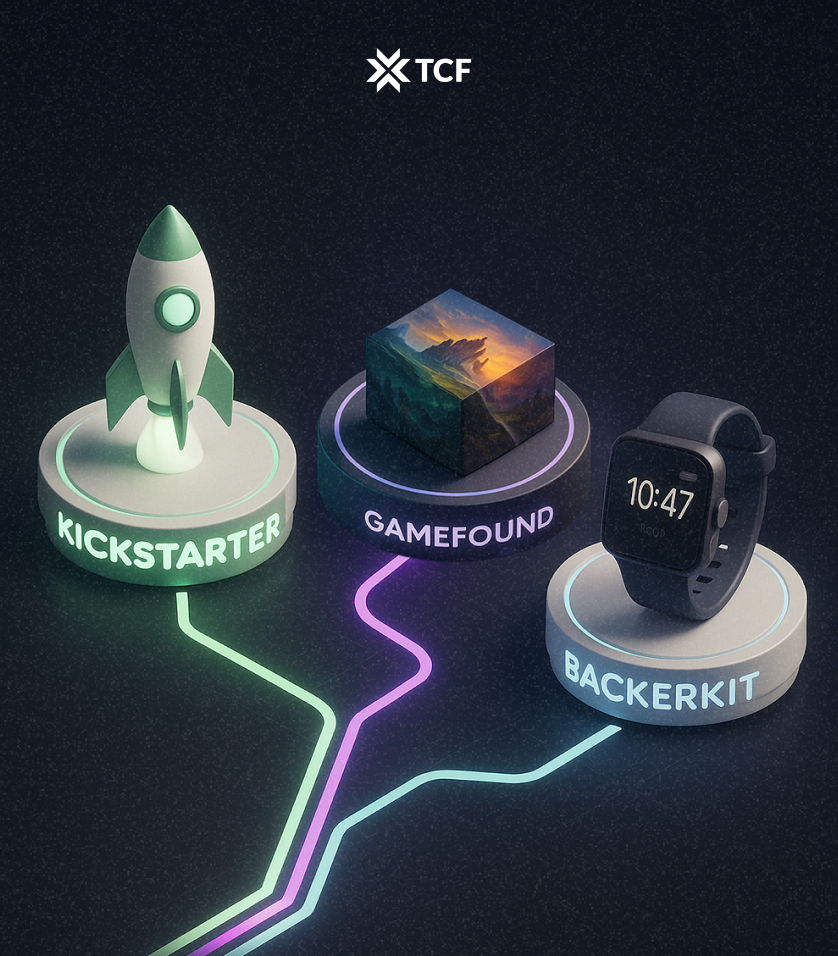



.png)
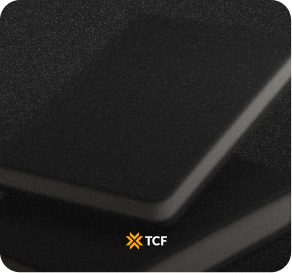

.png)
